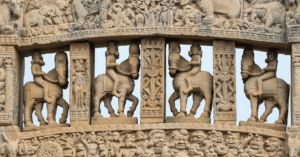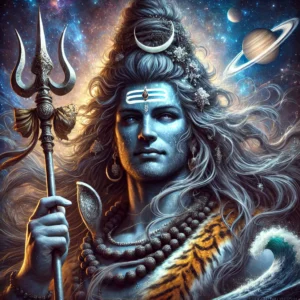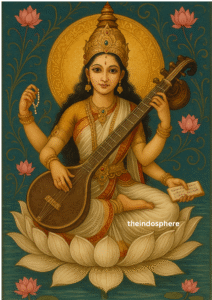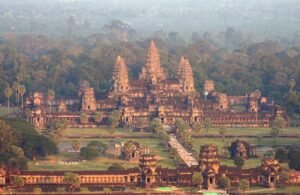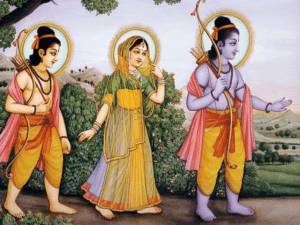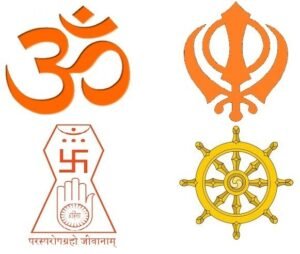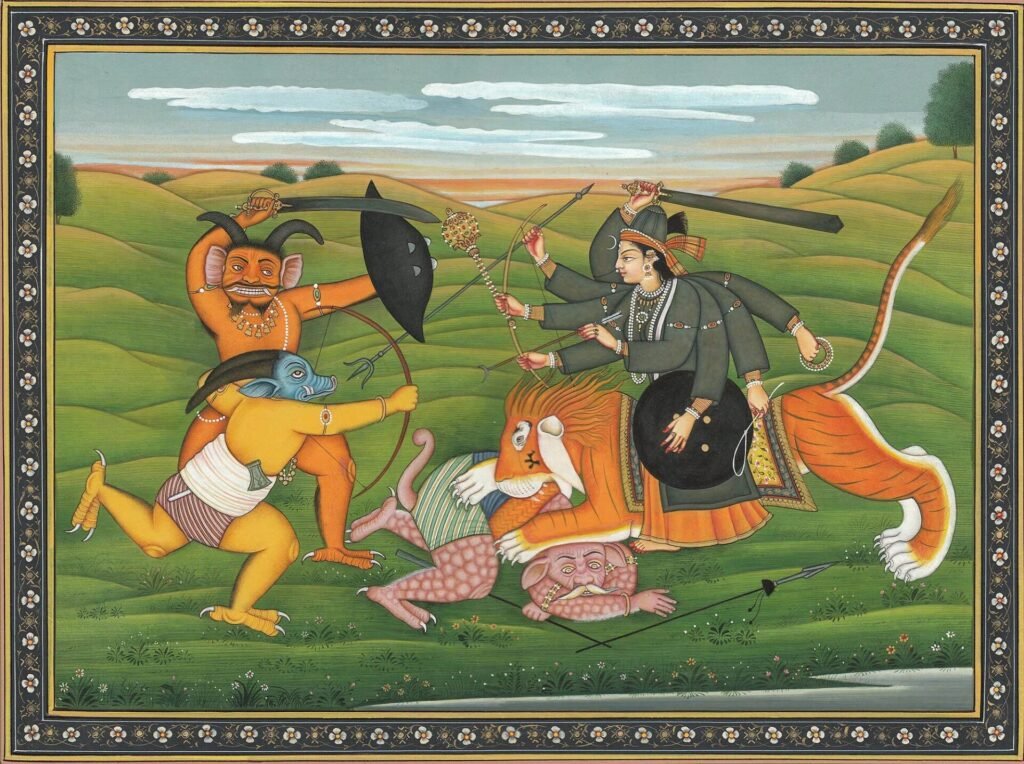
The Story of Shumbha and Nishumbha from Devi Mahatmya
The tale of Shumbha and Nishumbha is one of the most well-known stories of good triumphing over evil in Hindu mythology. Found primarily in the Devi Mahatmya, a part of the Markandeya Purana, this legend recounts how these two asura brothers terrorized the universe before being defeated by the goddess Durga. Their story serves as a symbol of divine justice, the destructive power of arrogance, and the protective energy of the divine feminine.
Key Characters in the Story
- Goddess Durga (Devi) – The central figure in this story, Goddess Durga, is the embodiment of divine power (Shakti). She appears in various forms to defeat the asuras and restore balance in the universe.
- Shumbh – One of the two asura brothers who, after gaining power through penance, becomes arrogant and greedy. He attempts to conquer the heavens and earth and desires to possess Goddess Durga.
- Nishumbh – Shumbh’s younger brother and closest ally, who shares his desire for power. Together, they attempt to take control of the three worlds.
- Chanda and Munda – Two asuras who serve Shumbh and Nishumbh. They are instrumental in bringing Goddess Durga to the attention of Shumbh, which leads to the ultimate conflict.
- Raktabeej – A powerful asura warrior with a unique ability: whenever a drop of his blood falls to the ground, a new asura is born. This ability makes him nearly impossible to defeat.
- Kali – A fierce manifestation of Goddess Durga. Kali is summoned to defeat Raktabeej, as she swallows his blood before it can fall and create new asuras.
Origins of Shumbh and Nishumbh
Shumbha and Nishumbha were born into the race of Daityas, demons born from Diti, a prominent figure in Hindu cosmology. Diti (Sanskrit: दिति) was the daughter of Prajapati Daksha and his wife Asikni. She married the sage Kashyapa and became the mother of two groups of beings: the Daityas, a race of demons, and the Maruts, a group of storm deities.
Diti’s children included some of the most infamous demons in Hindu mythology, such as Hiranyakashipu, Hiranyaksha, Raktabija, Vajranaka, and Arunasura. These powerful asuras often engaged in battles with the gods, attempting to overthrow them and gain control of the heavens. Diti also had a daughter named Simhika, also known as Holika.
Among Diti’s many children, Shumbh and Nishumbh are remembered for their extreme arrogance and unquenchable thirst for power.
The Rise of Shumbha and Nishumbha Reign of Terror
Shumbha and Nishumbha, like many Daityas, aspired to conquer the universe and subjugate both gods and humans. Driven by their ambition, they performed penance for ten thousand years at the sacred site of Pushkara. Brahma, the creator deity, was pleased with their devotion and granted them a boon that no man – whether human, god or asura could defeat them.
Empowered by this boon, the two brothers took control of the heavens, the earth, and the underworld. They attacked the heavens, dethroned Indra, the king of the gods, and drove the deities from their celestial abodes. The brothers took control of the universe, spreading chaos and fear. Under their rule, the balance between good and evil was destroyed, leading to widespread suffering.
The Goddess Durga
As the gods fled from the demon brothers, they sought refuge with the Trimurti—Brahma, Vishnu, and Shiva—and prayed for divine intervention. In response to their prayers, Durga, the embodiment of Shakti (divine feminine power), appeared. Also known as Adishakti or Parvati, Durga was the only being capable of ending Shumbha and Nishumbha’s tyranny, as Brahma’s boon ensured that no male could defeat them.
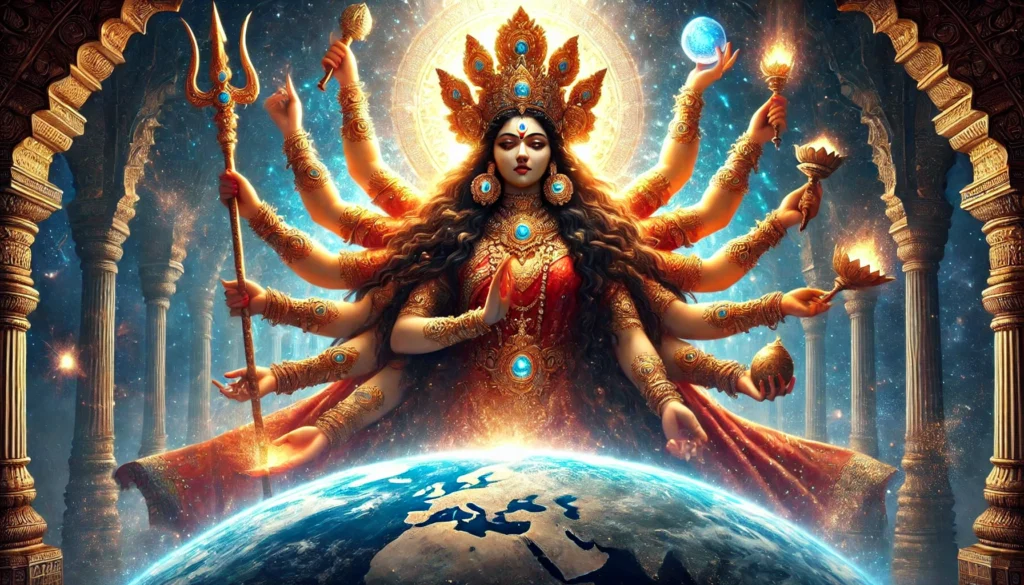
As Durga, riding her lion, prepared for battle as the demon armies approached. As an embodiment of the combined powers of all the gods, she was equipped with their divine weapons. For example, Vishnu gave her his chakra (discus), Shiva his trishul (trident), Indra his vajra (thunderbolt), and Agni his fiery weapon. This made her an incredibly powerful force capable of confronting the massive asura army.
Shumbha’s Desire for Goddess Durga
Chanda and Munda, two lesser asuras in the service of Shumbha, were the first to encounter the Goddess and were overwhelmed by her beauty. They reported back to Shumbha, who then sought to possess her. Shumbha, desiring to possess her, sent his messenger asura Sugriva to court Parvati, and bring her to him as his wife.
When they reached the Himalayas, where Goddess Durga resided, they tried to convince her to marry Shumbha, praising his wealth and power. However, the Goddess refused, stating she would only marry someone who could defeat her in battle. Angered by her refusal, Shumbha decided to take her by force.
The Battle Between Durga and the Asura Army
As the battle began, Durga, in her serene yet fierce form, stood her ground against wave after wave of demon soldiers. Her lion, symbolizing ferocity and courage, fought alongside her. The asura army led by Shumbha and Nishumbha was vast, but Durga was not alone. As the battle escalated, she manifested various fierce aspects of herself to deal with specific challenges, particularly the generals and commanders of Shumbha’s army.
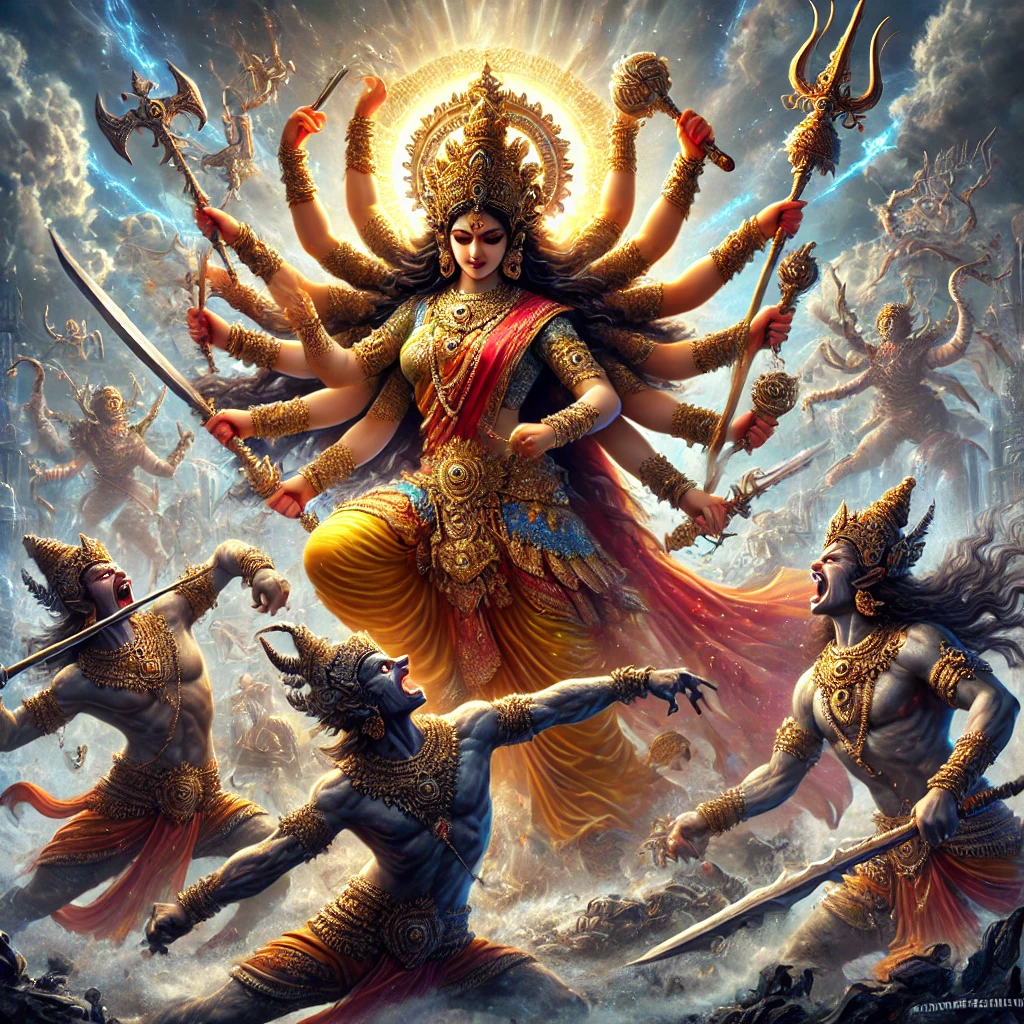
The First Attack: Dhumralochana and His Army
Shumbha first sent the asura Dhumralochana with an army of 60,000 asuras to abduct Goddess Durga. But the Goddess was ready for battle. With a single powerful roar, she turned Dhumralochana to ashes and easily defeated his entire army of asuras.
The Battle Against Chanda and Munda
Next, Shumbha deployed Chanda and Munda to capture Durga. However, Durga assumed a fierce form known as Chandika and fought them with tremendous strength. In the end, she beheaded both Chanda and Munda, and this form of the Goddess came to be known as Chamunda, named after the two fallen asuras.
The Challenge of Raktabeej
After the defeat of Chanda and Munda, Shumbha and Nishumbha sent their most powerful warrior, Raktabeej, to face Goddess Durga. Raktabeej had a unique ability: whenever a drop of his blood fell to the ground, a new asura was born from it. As Durga attacked him, more and more asuras were created with every drop of his blood that touched the battlefield.

To overcome this challenge, Durga summoned Kali, a terrifying manifestation of her own power. Kali spread her tongue across the battlefield and drank all of Raktabeej’s blood before it could fall, preventing any new asuras from being born. Every time Durga’s weapons drew blood, Kali consumed it immediately. Without his regenerative ability, Raktabeej was defeated.
The Final Battle: Shumbha and Nishumbha’s Defeat
With their strongest warrior defeated, Shumbha and Nishumbha themselves entered the battlefield. Nishumbha attacked first with a massive army of asuras, but after a fierce battle, he was slain by Goddess Durga.
Enraged by his brother’s death, Shumbha engaged in a final battle with the Goddess. As they fought, Shumbha accused Durga of relying on the strength of others to defeat him. In response, Durga revealed that all the goddesses who had appeared on the battlefield were simply different forms of herself. She absorbed them all back into her own body, showing her supreme power.
Durga then faced Shumbha in single combat and, after a long struggle, killed him, bringing an end to his reign of terror, and the gods who had fled from the heavens were able to return and restore balance to the cosmos.
Symbolism of Durga’s Fierce Forms
Durga’s different manifestations in the battle—Kali, Chandika, and her serene form—are symbolic of the multi-faceted nature of divine power. While she embodies protection, nurture, and balance, her fierce forms represent the destruction of evil, the elimination of arrogance, and the restoration of dharma (righteousness).
- Kali is the force that destroys ego, ignorance, and delusion. Her appearance on the battlefield shows that unchecked evil and ego, no matter how powerful, cannot stand against the pure force of divine justice.
- Chandika is the raw, wrathful power of the universe, the energy that arises when righteousness is threatened. Her role in the battle represents the cosmic rage against injustice and oppression.
Durga, in her entirety, symbolizes the Shakti (divine feminine energy) that sustains, protects, and occasionally destroys to maintain cosmic order. Her victory over Shumbha and Nishumbha is a powerful reminder that no matter how invincible evil may seem, it will eventually be destroyed when faced with the power of righteousness and truth.
Legacy and Significance
The victory of Durga over Shumbha and Nishumbha is celebrated annually during Navaratri and Durga Puja. These festivals honor the goddess for her courage, strength, and protective nature. The story also serves as a timeless reminder that no matter how powerful evil may seem, it will ultimately be destroyed when faced with divine truth, justice, and righteousness.
The tale of Shumbha and Nishumbha is more than just a story of divine victory over demons—it symbolizes the eternal struggle between good and evil, ego and humility, and chaos and balance. Durga’s triumph highlights the importance of divine feminine power in restoring harmony in the universe.

